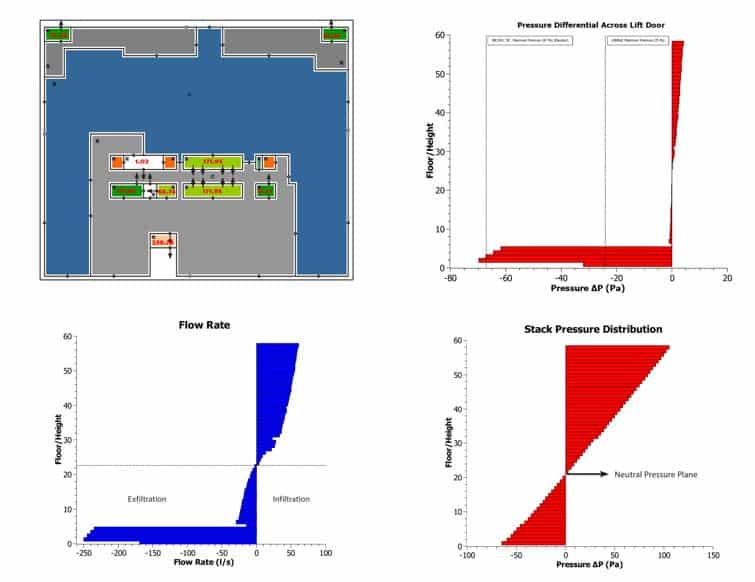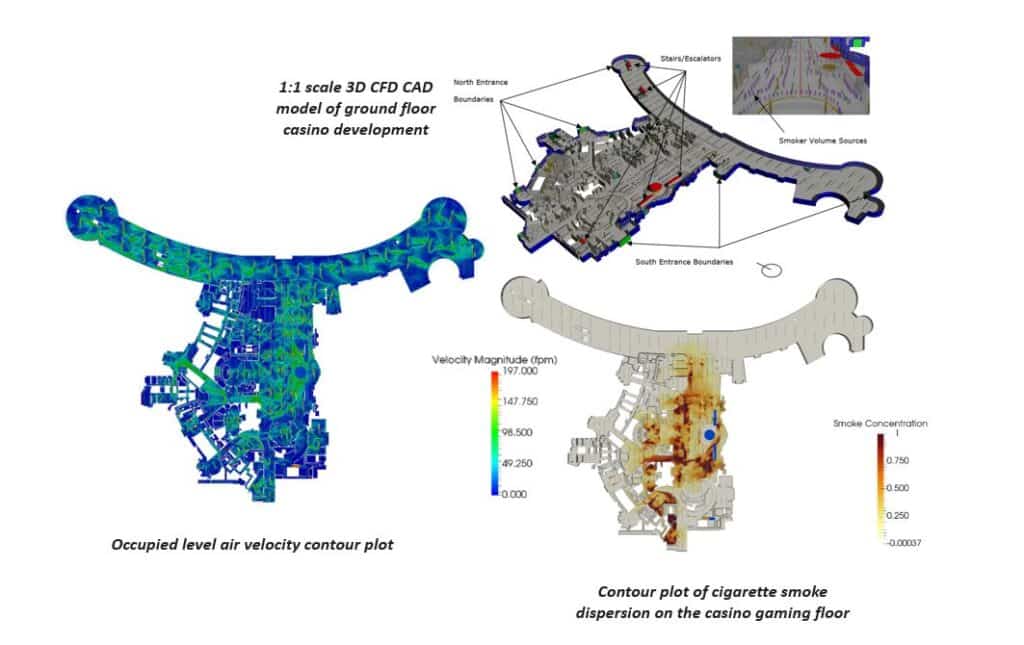Thermal Stack Effect
Numerical modelling is a useful tool for ensuring tall buildings are not adversely affected from the impacts of thermal stack effects which is a common problem in hot and cold environments.
WINDTECH has developed a reliable and cost-effective method for the analysis of stack effect, working on numerous buildings around the world.
Case Study: Plot 97, Downtown Dubai
This stack effect analysis was undertaken to define the performance characteristics of the building under certain climatic conditions and identify any negative effects that may arise from the stack effect due to the large louvred vents specified in the design. Through this analysis, the design and specification of these louvred vents was refined to mitigate stack effect.
Plot 97, Downtown Dubai – Ground Floor modelled flow rates and typical data outputted for various aspects of stack effect phenomenon throughout the building envelope for the summer season.
Case Study: Resorts World, Las Vegas
The CFD analysis for thermal stack effect and smoke dispersion was undertaken for both the summer and winter periods. The results of the analysis showed hotspots of high air velocity in the atriums between the main casino floor and the hotel entrances, largely the exfiltration of wind flow through the main entrances of the casino. However, the exfiltration of the air flow within the casino space also benefited the region as it actively removed smoke pollution from occupants.




